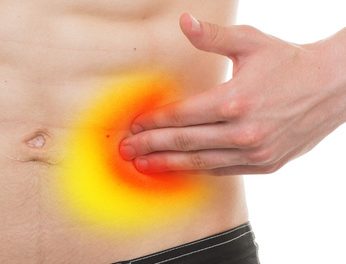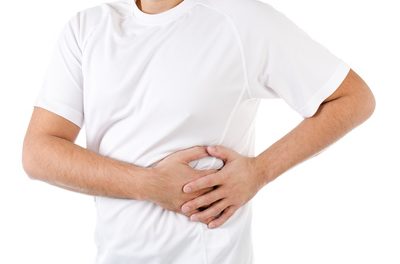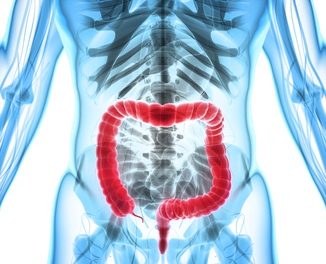Causes of Left Side Abdominal Pain (Left Stomach Pain)
Left side abdominal pain may arise from the internal organs of the abdomen, namely the gastrointestinal and urinary tract, chest, upper pelvic organ, abdominal wall muscles, bones (ribs, spine, pelvis), vessels, nerves or skin. It can be difficult to isolate the exact cause of left sided abdominal pain. The presence of other signs and symptoms are an important indication of possible causes of left sided abdominal pain and factors that exacerbate or ease the pain are a vital clue to the underlying condition.
If the pain is of a sudden onset, unbearable and associated with a high fever, dizziness, confusion or a loss of consciousness then immediate medical attention needs to be sought. Always monitor for modalities, such as whether the pain is related to eating, sleeping, bowel movements, flatulence (passing gas), movement or to the menstrual cycle in adolescent girls or women.
Finding the Cause of Abdominal Pain
The list of causes of left side abdominal pain are listed below. These causes arranged in order from the upper abdomen (above the belly button) to lower abdomen (below the belly button). It is intended to serve as a guide but ultimately a diagnosis by a medical professional is necessary. An abdominal ultrasound, x-ray, CT scan or MRI are often required for a definitive diagnosis, along with specialized investigations like a flexible sigmoidoscopy, colonoscopy or double contrast barium enema for gastrointestinal conditions.

Upper Left Abdominal Pain
Upper left abdominal pain is most often due to a condition afflicting one or more organs or structure in the LUQ (left upper quadrant) of the abdomen. It may also be due to conditions in the thoracic cavity or lower left abdominal area that either refers or radiates to the LUQ. This may correlate with pain under the left rib cage.
LARGE INTESTINE
Also known as the large bowel, the large is responsible for the final stages of water absorption which leads to the formation of a solid stool from the liquid intestinal chyme. This fluid chyme is the digested remnants of food, water, bile, mucus and enzymes passed from the small intestine. The upper part of the descending colon, the left colic flexure and the last part of the transverse colon lie in the upper left quadrant of the abdomen.
The large intestine houses a number of species of colonic bacteria which are necessary for normal functioning. However, some of these bacteria can cause disease if there is an overgrowth or if pathogenic bacteria replace it. The large intestine includes the cecum (junction between small and large intestine), colon, rectum and anus. Conditions of the large intestine that may cause left side abdominal pain includes :
- Constipation – infrequent passing of stool that is hard and difficult to pass out.
- Volvulus – twisting of the transverse colon around its axis which is rare.
ABDOMINAL MUSCLES
The abdominal muscles includes several types of muscles that constitute the abdominal wall. It protects the abdominal organs. These muscles are strong since the abdominal wall lacks a skeletal shield like the chest cavity. These muscles also stabilize the trunk during standing, walking and running and are prone to injury. Muscular conditions that may cause abdominal pain includes :
- Muscle strain
- Abdominal hernia – an abnormal protrusion of the abdominal wall.
- Blunt force trauma – like a blow to the abdomen.
- Rectus sheath hematoma
- Abscess in psoas muscle
PANCREAS
The pancreas is a large gland which has exocrine functions that affects digestion and endocrine functions which controls metabolism. It empties its digestive enzymes (exocrine component) into the duodenum, which is the first part of the small intestine along with bile released by the gallbladder. Without these enzymes, the process of digestion is severely impaired. Pancreas pain is may extend from the upper middle region of the abdomen to the upper left side of the abdomen.
- Acute or chronic pancreatitis
- Pancreatic cancer
SPLEEN
The spleen is the largest lymph node in the body responsible for filtering blood, removing cellular debris and foreign microorganisms. Although the spleen can be removed without hampering life, it nevertheless plays several important roles in the body. Spleen pain causes left flank pain and may be caused by:
- Splenic infarct
- Ruptured spleen, often in car accidents
- Enlarged spleen (splenomegaly) only in cases of massive splenomegaly.
Read more on signs of spleen problems.

LEFT KIDNEY and URETER
The kidney is responsible for filtering the blood, removing wastes and passing it out in the urine while conserving essential electrolytes and water. It also plays other important roles in regulating several functions in the body that are not associated with urine, like stimulating the production of red blood cells. The kidney is located in the upper part of the abdomen and shielded by the rib cage. Urine from the kidney leads to the bladder via the ureter.
Kidney pain may be due to one or more of these conditions:
- Pyelonephritis – infection of the kidney
- Glomerulonephritis (kidney inflammation), kidney cyst or tumor
- Urinary stones
LEFT ADRENAL GLAND
The adrenal gland, also known as the suprarenal gland, is located on the top of each kidney. It has two distinct layers, the medulla and cortex, which secrete various hormones that play important roles in the body.
- Adrenal adenoma (benign tumor)
- Adrenal carcinoma also known as adrenocortical carcinoma. (malignant tumor)
LUNGS
The lungs are responsible for gas exchange between the air and blood stream. Although not often considered in abdominal pain, diseases affecting the base of the lung may also affect the pleura lining around the lung) and diaphragm (main muscle of respiration) that can lead to pain. The lung itself cannot feel pain unless the surrounding structures are affected. Some conditions of the lung that may cause abdominal pain includes :
- Pneumonia – usually bacterial or viral.
- Pleuritis – inflammation of the lung membrane.
- Pulmonary embolism – blood clots in the lungs.
HEART
The heart is the muscular pump that circulates blood throughout the body. It is situated in the mediastinum, the centrally located cavity between the lungs and is in close proximity to the upper middle abdominal area. It often causes referred pain to the upper abdomen when diseased. The following conditions may cause cardiac pain:
- Heart attack
- Angina pectoris – pain behind the breastbone in heart or coronary arteries disease.
- Pericarditis, mycocarditis or endocarditis.
Heart diseases are often considered as medical emergencies as the condition can be life-threatening. It should always be suspected when accompanied by symptoms such as pain to the left jaw or arm with dizziness and/or fainting.
DIAPHRAGM
The diaphragm is the largest muscle of respiration and separates the chest cavity from the abdominal cavity. During inspiration it pushes the abdominal contents downwards as the chest cavity expands. On the left side, the most prominent feature is the diaphragmatic opening which allows the esophagus (gullet) to pass to connect with the stomach.
- Abscess – collection of pus below diaphragm.
STOMACH
The stomach is the hollow sac that lies between the end of the esophagus and the first part of the small intestine known as the duodenum. It is located in the upper left side of the abdomen. The stomach is prone to various diseases often associated with the corrosive gastric acid that it produces and holds. Some conditions of the stomach that may be responsible for left sided abdominal pain includes :
- Gastritis
- Stomach ulcers
- Hiatal hernia
- Stomach cancer
- Stomach polyps – pain is more likely with large masses.
Gastric causes of upper left abdominal pain often correlates with abdominal pain after eating.
OTHER CAUSES OF UPPER LEFT ABDOMINAL PAIN
Lower Left Abdominal Pain
Lower left abdominal pain may be due to the organs or structures located in the LLQ (lower left quadrant) of the abdomen. As with upper abdominal pain, the pain may be referred or radiated from other sites. Due to the continuity of the many structures, particularly the gastrointestinal tract, urinary tract and large blood vessels (aorta or inferior vena cava). The pelvic structures, particularly the ovaries, fallopian tubes and uterus, are common causes of lower left abdominal pain in women. This pain may correlate with pain above the left hip.
COLON
The colon is the largest part of the left intestine. The lower half of the descending colon and the sigmoid colon lie in the lower left side of the abdomen. Therefore colon pain may arise from these parts of the large intestine.
- Constipation
- Trapped gas in the colon is more likely to occur in the left part of the transverse colon (splenic flexure syndrome).
- Irritable bowel syndrome (IBS) is functional disorder particularly of the large intestine characterized by disturbances in bowel habit and intestinal cramps, hence the alternative name spastic colon.
- Diverticulitis – inflammation of the last part of the colon (sigmoid colon).
- Diverticulosis – non-inflamed pouches in the colonic wall.
- Clostridium difficile infection after antibiotic treatment.
- Inflammatory bowel disease (IBD) – Crohn’s disease or ulcerative colitis.
- Ischemic or microscopic colitis
- Colorectal polyps or colorectal cancer
- Volvulus of sigmoid colon.
APPENDIX
The appendix is an outpouching of the large intestine which may become obstructed, infected and severely inflamed. Appendicitis usually causes right lower abdominal pain but sometimes left lower abdominal pain may occur instead. A ruptured appendix or abscess in the appendix may be other possible causes of pain in this region. It is important to understand the location of appendix pain and how it presents to differentiate it from other causes.
Video
The following video outlines some of the possible causes of left side abdominal pain. A more extensive list of conditions that may cause upper and lower left abdominal pain is discussed below.
FEMALE REPRODUCTIVE ORGANS
Various gynecological disorders are a common cause of lower left abdominal pain in women particularly when associated with ovulation and menstruation (periods). Pregnancy may also account for pain due to the expanding uterus and uterine contractions seen in an otherwise healthy pregnancy.
- Ovulation pain (mid-cycle pain, Mittleschmerz)
- Gonorrhea
- Twisted or ruptured ovarian cyst
- Ectopic pregnancy
- Pelvic Inflammatory Disease (PID)
- Endometriosis
- Miscarriage
- Polycystic ovarian syndrome – PCOS
- Fibroids
MALE REPRODUCTIVE ORGANS
Pain rarely occurs solely in the left lower abdominal area without pain, swelling or visible lesions in the pelvic area or on the genitalia.
- Spermatic cord disorders
- Testes disorders
- Gonorrhea
ABDOMINAL MEMBRANE (PERITONEUM)
The peritoneum is the membrane that surrounds various abdominal organs, particularly those of the gastrointestinal tract, and encloses it within its own peritoneal cavity in the abdomen. Peritoneal fluid helps to lubricate the organs that are in constant contact with each other.
- Peritonitis
- Ascites
ABDOMINAL BLOOD VESSELS
The abdominal blood vessels include the abdominal portion of two of the largest blood vessels in the body – aorta (artery) and inferior vena cava (vein) – that carries blood to and from the heart. It is prone to a number of disorders and diseases which may also include its various branches and tributaries.
- Aneurysm of abdominal aorta
- Atherosclerosis or embolism of mesenteric arteries
- Hereditary angioedema
- Henoch-Schönlein-purpura
OTHER
- Bowel obstruction
- Pelvic adhesions
- Porphyria
- Sickle cell disease
- Herpes zoster (shingles)
- Dermatitis exacerbated by an infection, abscess formation or tears in the skin.
References:
- Understanding New and Severe Abdominal Pain. Harvard Medical School






